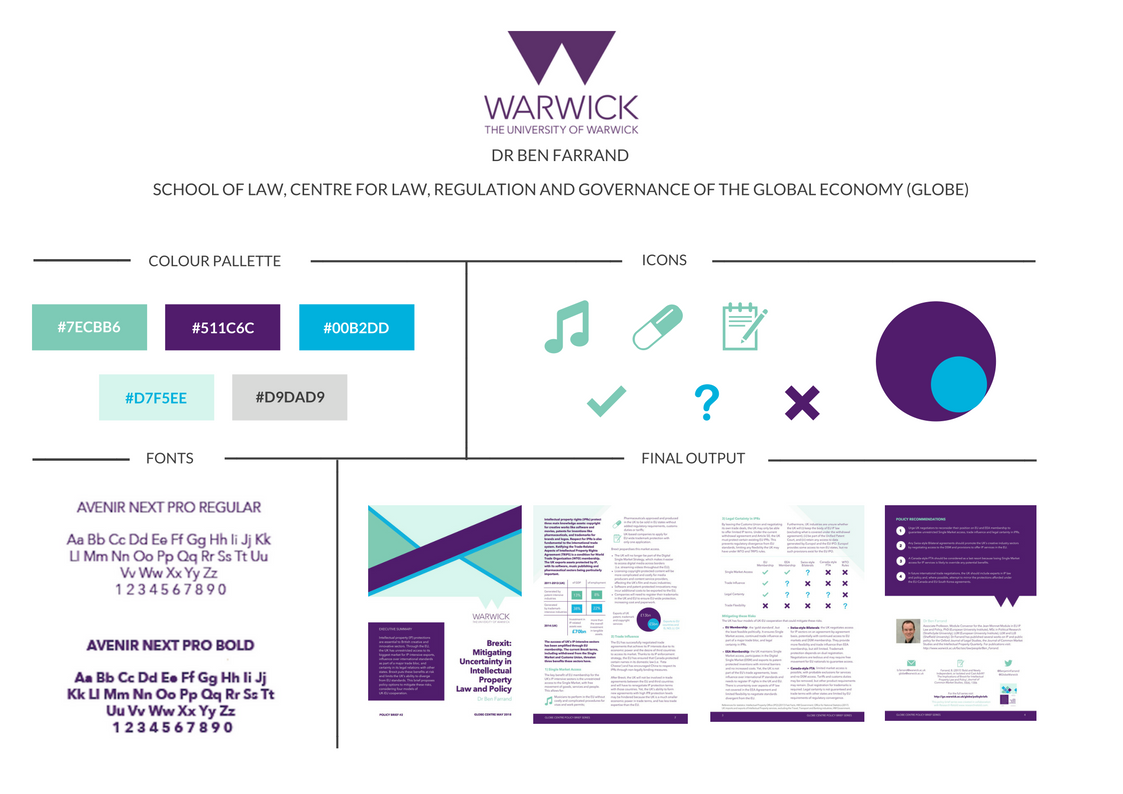This blog post focuses on the step-by-step process of producing the second GLOBE policy brief, authored by Dr Ben Farrand and titled: “Brexit: Mitigating Uncertainty in Intellectual Property Law and Policy”.
This brief is part of the GLOBE Centre Policy Brief Series launched in February 2018. The purpose of this series is to showcase the expertise of the researchers. We also wrote a post about the first brief by Andreas Kokkinis.
Let´s start!
Step 1: Introductory Call & Research Consultation
The first step in the production of the policy brief was a call with Ben to cover:
– A short introduction to the collaboration and desired outcomes;
– An introduction to Ben’s research;
– The structure of the policy brief;
– The production stages;
– Required materials and time commitment; and
– Q&A for any clarifications needed.
The call was necessary to frame the process and place Ben in the right mindset for producing the initial draft.
Step 2: Text Editorial Guidance
Original research source
This policy brief was based on his paper “Bold and Newly Independent, or Isolated and Cast Adrift? The Implications of Brexit for Intellectual Property Law and Policy”. The abstract, introduction and conclusion were a good starting point to flesh out the content.
Pre-writing questions
To aid his next writing step, Ben answered these questions:
– What would be the purpose of communicating my research in a policy brief?
– Who is my audience?
– If I could speak to three key stakeholders who would they be and why?
– What’s their current position on this topic and what are the current gaps in their evidence base?
– Which findings should I tell these individuals to capture their attention and respond to gaps in their evidence base?
– What policy or behavioural changes would I want to see happen as a result of your brief?
Structuring the policy brief
Ben then provided us with ±750 words of material for the policy brief. He arranged the text in the following way:
– Executive Summary: 80 words
– Body of text: 550 words
– Policy Recommendations: 120 words
We rearranged the text in a more logical and easy-to-follow narrative and structure. We organised the content around the three risks the UK’s IP-intensive industries face as a result of Brexit. This structure emerged as a result of our discussions.
Unpacking the jargon
We made the phrasing as clear as possible and crafted each sentence to drive home the main messages.
In a further call with Ben, we went over the changes and reached a near-final version of the text. In total, the text editorial guidance stage required 2 opportunities for feedback and the content had reached this stage:
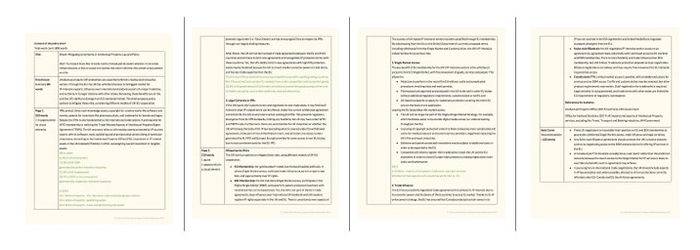
Step 3: Design Guidance
Visual elements
Crucially, the policy brief contains visual elements to visually illustrate the points. Ben thought of a few visual elements and he chose the following:
a) Percentages and stats to illustrate key points:
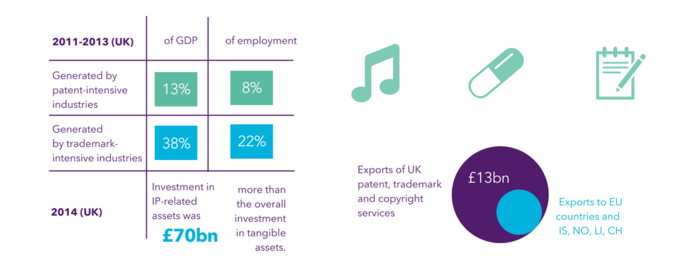
b) A table to indicate the various institutional options and the benefits they offer:
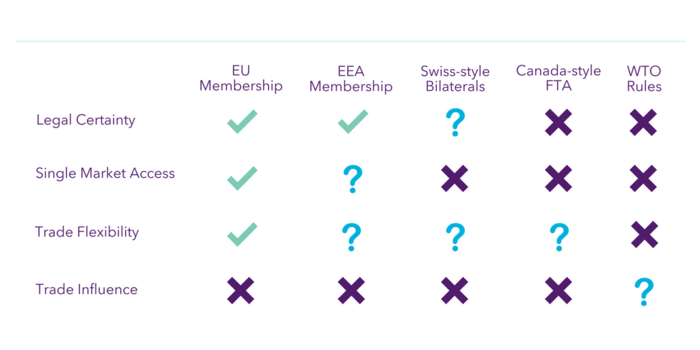
Incorporating the text in the template
We worked with the template following the branding of Warwick University which we also used for PB1:
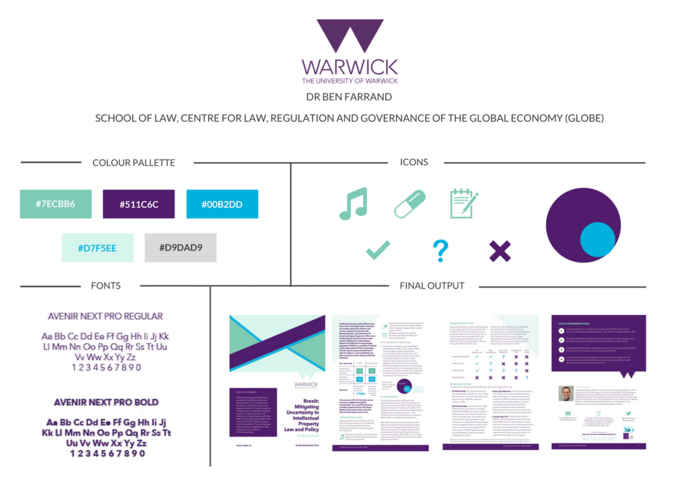
Final polish and review
We edited and improved the brief’s readability during 4 feedback opportunities. The final review concluded the 4-week process to produce the second policy brief in the GLOBE series. The final result is a brief that frames Ben’s research in a policy-relevant light within the current Brexit negotiation debates.
Step 4: Dissemination of brief outside academia
Once everyone approved the brief, we took a few steps to publish and disseminate it:
Publish on the dedicated website
The brief was uploaded on the dedicated GLOBE website: http://go.warwick.ac.uk/globe/policybriefs
Making a list of potential dissemination ideas
In our post about Policy Briefs in the blog series ‘Ways to Present Research’, we mentioned 9 ways for a researcher to share their policy brief outside academia. These were our starting points:
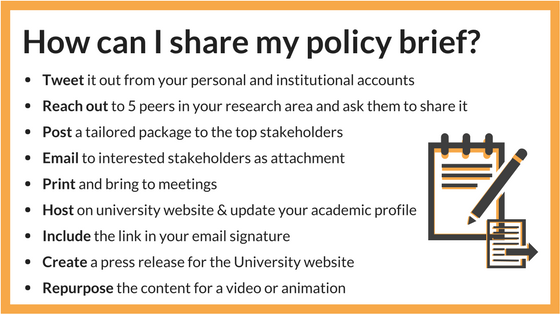
Involving the Press Office in the series’ launch via press releases
Andreas liaised with the Press Office at Warwick University and prepared a press release.
Composing an outreach message
We composed a short email for engagement with contacts outside academia. This email doubles up as a cover letter (the brief can be printed and posted to relevant people):
Subject: A policy brief on [topic of brief]
Dear [Contact Name],
I’m reaching out to you because I know you are interested in […] given your […]. I recently published a policy brief on [synopsis of brief] which contains policy recommendations for […].
[insert image of the policy recommendations section in the email/letter]
You can read the short policy brief in full here and let me know what you think.
I’m a researcher and [insert title] at [insert name of institution & department]. If you would like to have a further conversation about this policy brief or to share it, do get in touch.
Best wishes,
[name & signature]
We’re thrilled with this policy brief and we loved working with Ben. We would love to hear your thoughts on it, too!
“Working with Research Retold was an enlightening and rewarding experience, giving me a much better insight into how academic research can be translated into specific policy proposals for a non-expert audience. Mihaela’s support in condensing complex issues and providing helpful critiques of numerous drafts was invaluable.”
Dr Ben Farrand, Associate Professor, School of Law, University of Warwick
What do you think of the new policy brief for Dr Ben Farrand from GLOBE, University of Warwick? Let us know in the comments!
